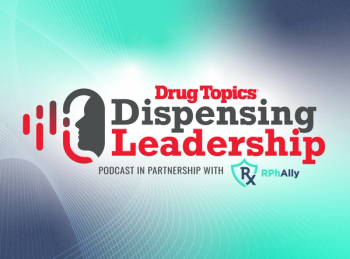
International Group Pushes for 9 New Drug Labeling, Packaging Guidelines
Standardization coming for drug labeling and packaging.
An internationally accepted set of best practices for drug labeling and packaging, aimed at reducing medication errors, could be getting closer.
Global regulators met last week at the FDA’s White Oak Campus in Silver Spring, MD, to discuss the use of technologies to reduce errors and the need for the establishment of an international barcode standard.
Cosponsored by FDA and the International Medication Safety Network (IMSN), the group was made up of of medication safety organizations and advocates from over 20 countries.
Nine Recommendations
Summit participants agreed that guidelines are needed regarding the presentation of critical label information to address look-alike labels. They concluded that logos and highly stylized graphics detract from the readability of the label. They also suggested review of existing guidelines and consideration of the following best practices related to drug labeling and packaging:
- Include both the per mL and the per container quantity, not the per mL quantity alone, when presenting the concentration for injectables.
- Use metric units for products, and eliminate ratio expressions.
- Eliminate potentially error-prone abbreviations and dose designations on labels, such as U for units, IU for international units, or trailing zeros (e.g., 1.0) to express strength.
- Prominently display cautionary statements on carton and immediate container labels of neuromuscular blockers, potassium chloride concentrate injection, methotrexate, and other selected error-prone medications.
- Use contrasting label backgrounds for the printing on glass ampules, and recommend font size and label orientation, to improve readability.
- Physically link or integrate diluents with drugs that are powders.
- Increase the adoption of ready-to-use/ready-to-administer syringes, premixed IV solutions, unit-dose packaging, and other more efficient, safer packaging, while considering the overall cost of implementation.
- Develop product-specific world safety standards; for example, standard packaging for non-oncologic methotrexate to prevent accidental daily use and overdoses.
- Include barcodes on packages so they can be scanned at the bedside or other locations where medications are dispensed or administered by healthcare providers.
The regulators discussed the processing and sharing of medication error information
by global pharmacovigilance (PV) centers. They recommended that PV centers seek input from healthcare practitioners and medication/patient safety organizations similar to the ones already established in many of the IMSN member countries. Summit participants agreed to create a white paper to promulgate these best practices.
Michael Cohen, RPh, president of the Institute for Safe Medication Practices, (ISMP), co-chair of the summit, tells Drug Topics that the meeting was “extremely valuable.” “We are trying to harmonize safe labeling and packaging practices. We shared safety issues with one another and there was a great deal of learning by all.”
Cohen cited an example in the U.S., where glass ampuls are rarely used as a dosage form and when they are, manufacturers provide a label that is readable, with a paper or ceramic background with contrasting print, where the font size is large enough to be readable.“On the other hand, some countries use ampuls as their primary dosage form for injectables – over 50% in some areas. However, they often are clear glass with black print or the print is on a dark amber background, which is nearly impossible to read,” says Cohen.
Barb Fobi, PharmD, ISMP international fellow, says because domestic drug manufacturing does not exist in many counties, drugs are commonly imported, often with features that can result in safety issues. Fobi says that in the U.S. drug shortages have also led to temporary importation of products, some of which exhibit unfamiliar characteristics (e.g., absence of a barcode) that increase the risk of errors. She noted that some international regulators have undertaken successful packaging and labeling changes that have reduced the risk of errors.Summit organizers said that further meetings and discussions are planned, including a follow-up meeting in Cascais, Portugal.
Newsletter
Pharmacy practice is always changing. Stay ahead of the curve with the Drug Topics newsletter and get the latest drug information, industry trends, and patient care tips.




































































































































